How do we educate students with disabilities in the arts? How do young artistic minds learn about disability? How did education evolve in the arts? Many questions that these authors answer. It will give you some inspiration for your own field or situation.
In this section, you will find links to digital accessible and paper versions of books. Kindle offers reading applications and tools that work with assistive technology and propose settings for all users. The digital version is usually cheaper than the paper version. For each book, you will find Amazon affiliate products, and WorldCat links for universities and libraries.
If you have an idea or a suggestion of product that you think should be added here, don’t hesitate to contact us.
Music
Listen: How Evelyn Glennie, a Deaf Girl, Changed Percussion
by Shannon Stocker (Author), Devon Holzwarth (Illustrator)
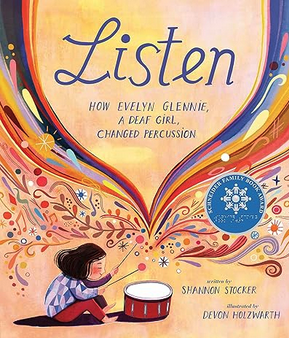
From the moment Evelyn Glennie heard her first note, music held her heart. She played the piano by ear at age eight, and the clarinet by age ten. But soon, the nerves in her ears began to deteriorate, and Evelyn was told that, as a deaf girl, she could never be a musician. What sounds Evelyn couldn’t hear with her ears, though, she could feel resonate through her body as if she, herself, were a drum. And the music she created was extraordinary. Evelyn Glennie had learned how to listen in a new way. And soon, the world was listening too.
Link to the Kindle version: https://amzn.to/3w8rPPj
Link to the paper version: https://amzn.to/3HVsNBh
Link to WorldCat for university students/staff and libraries: https://search.worldcat.org/title/1258041520
Disability and Accessibility in the Music Classroom: A Teacher’s Guide (Modern Musicology and the College Classroom)
by Alexandria Carrico (Author), Katherine Grennell (Author)
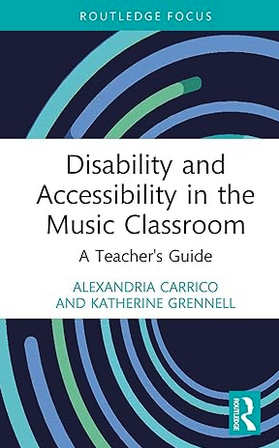
Disability and Accessibility in the Music Classroom provides college music history instructors with a concise guide on how to create an accessible and inclusive classroom environment. In addition to providing a concise overview of disability studies, highlighting definitions, theories, and national and international policies related to disability, this book offers practical applications for implementing accessibility measures in the music history classroom. The latter half of this text provides case studies of well-known disabled composers and musicians from the Western Art Music canon from the Middle Ages to the Twentieth Century as well as popular music genres, such as the blues, jazz, R&B, pop, country, and hip hop. These examples provide opportunities to integrate discussions of disability into a standard music history curriculum.
Link to the Kindle version: https://amzn.to/3SxrRYQ
Link to the paper version: https://amzn.to/3uvx0bH
Link to WorldCat for university students/staff and libraries: https://search.worldcat.org/title/1319082433
Dance
I Will Dance
by Nancy Bo Flood (Author), Julianna Swaney (Illustrator)
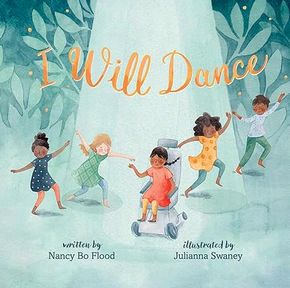
This poetic and uplifting picture book illustrated by the #1 New York Times bestselling illustrator of We Are the Gardeners by Joanna Gaines follows a young girl born with cerebral palsy as she pursues her dream of becoming a dancer. Like many young girls, Eva longs to dance. But unlike many would-be dancers, Eva has cerebral palsy. She doesn’t know what dance looks like for someone who uses a wheelchair. Then Eva learns of a place that has created a class for dancers of all abilities. Her first movements in the studio are tentative, but with the encouragement of her instructor and fellow students, Eva becomes more confident. Eva knows she’s found a place where she belongs. At last her dream of dancing has come true.
Link to the Kindle version: https://amzn.to/4bIZEXM
Link to the paper version: https://amzn.to/4bz3rqw
Link to WorldCat for university students/staff and libraries: https://search.worldcat.org/title/1100424940
Theatre/Acting
Disability and Theatre: A Practical Manual for Inclusion in the Arts 1st Edition
by Stephanie Barton-Farcas (Author)
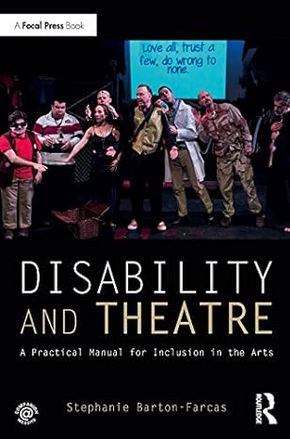
Disability and Theatre: A Practical Manual for Inclusion in the Arts is a step-by step manual on how to create inclusive theatre, including how and where to find actors, how to publicize productions, run rehearsals, act intricate scenes like fights and battles, work with unions, contracts, and agents, and deal with technical issues. This practical information was born from the author’s 16 years of running the first inclusive theatre company in New York City, and is applicable to any performance level: children’s theatre, community theatre, regional theatre, touring companies, Broadway, and academic theatre. This book features anecdotal case studies that emphasize problem solving, real-world application, and realistic action plans. A comprehensive Companion Website provides additional guidelines and hands-on worksheets.
Link to the Kindle version: https://amzn.to/3usboNw
Link to the paper version: https://amzn.to/3uwLbgL
Link to WorldCat for university students/staff and libraries: https://search.worldcat.org/title/979566161
Representing Youth with Disability on Television: Glee, Breaking Bad, and Parenthood (Critical Qualitative Research Book 23) 1st Edition
by Dana Hasson (Author)
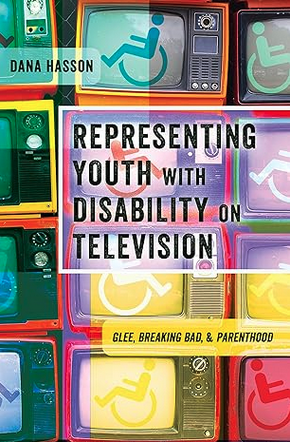
Representing Youth with Disability on Television is a complex and multidimensional mainstream cultural discourse that examines specific stereotypes in fictional programming. The book draws attention to the group labeled as disabled, which is often marginalized, misrepresented, and misunderstood in the media, by analyzing the popular television programs Glee, Breaking Bad, and Parenthood. To obtain a more rigorous account of the way that youth (9–18 years of age) with disability are framed on television, this analysis examines the following issues: how research on popular culture is contextualized within social theory; the theoretical perspectives on representations of disability in popular culture; and the various contexts, genres, media, representations, and definitions of youth with disability in popular culture. The text also outlines the historical growth of disability, which is crucial for a discussion regarding the changing dimensions of popular culture. Critical hermeneutics, content analysis, and methodological bricolage are the mélange of methodologies used to closely examine the dominant models of disability (social vs. medical) used in the portrayal of disabled youth on television today.
Link to the Kindle version: https://amzn.to/3Uy8QIc
Link to the paper version: https://amzn.to/3UzwmEC
Link to WorldCat for university students/staff and libraries: https://search.worldcat.org/title/933420626
Teaching Strategies for Neurodiversity and Dyslexia in Actor Training: Sensing Shakespeare 1st Edition
by Petronilla Whitfield (Author)
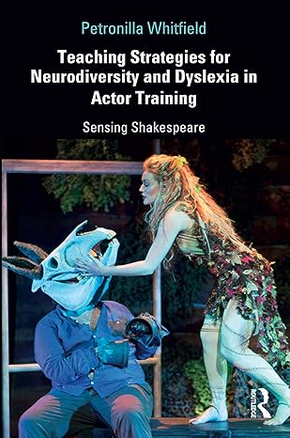
Teaching Strategies for Neurodiversity and Dyslexia in Actor Training addresses some of the challenges met by acting students with dyslexia and highlights the abilities demonstrated by individuals with specific learning differences in actor training. The book offers six tested teaching strategies, created from practical and theoretical research investigations with dyslexic acting students, using the methodologies of case study and action research. Utilizing Shakespeare’s text as a laboratory of practice and drawing directly from the voices and practical work of the dyslexic students themselves, the book explores: the stress caused by dyslexia and how the teacher might ameliorate it through changes in their practice; the theories and discourse surrounding the label of dyslexia; the visual, kinaesthetic, and multisensory processing preferences demonstrated by some acting students assessed as dyslexicacting approaches for engaging with Shakespeare’s language, enabling those with dyslexia to develop their authentic voice and abilities; a grounding of the words and the meaning of the text through embodied cognition, spatial awareness, and epistemic tools; Stanislavski’s method of units and actions and how it can benefit and obstruct the student with dyslexia when working on Shakespeare.
Link to the Kindle version: https://amzn.to/3SShqQJ
Link to the paper version: https://amzn.to/499C3ha
Link to WorldCat for university students/staff and libraries: https://search.worldcat.org/title/1121072139
Multidisciplinary
A History of Disability and Art Education (Routledge Advances in Disability Studies)
by Claire Penketh (Author)
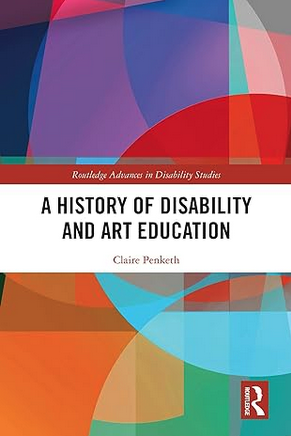
Drawing on recent theoretical frameworks from critical disability studies and art education including normalcy, ableism, disability and Crip theory, this book offers an analysis of the conceptualisation of ability in art education and its relationship with disability. Drawing on the work of Cizek and Lowenfeld in Austria, Ruskin and Richardson in England and Dewey and Eisner in the United States, it critically examines the influence of ideas such as the dominance of vision and visuality; the emergence of psychological perspectives; the Child Art Movement; the implications of assessment regimes; and the relevance of art education as a critical social practice on the production of disability. Offering a sustained inquiry into the differential values attributed to learners and their work and the implications of this for framing our understanding of disability in art education, this book shows that although art educators have frequently advocated for the universal appeal and importance of art education, they have done so within historical contexts that have produced and determined problematic ideas regarding disability. It will be of interest to all scholars and students of disability studies, art in education, art history and education studies.
Link to the Kindle version: https://amzn.to/49g0Sbq
Link to the paper version: https://amzn.to/3HVM0D2
Link to WorldCat for university students/staff and libraries: https://search.worldcat.org/title/1382251791
The Routledge Handbook of Disability Arts, Culture, and Media 1st Edition
by Bree Hadley (Editor), Donna McDonald (Editor)
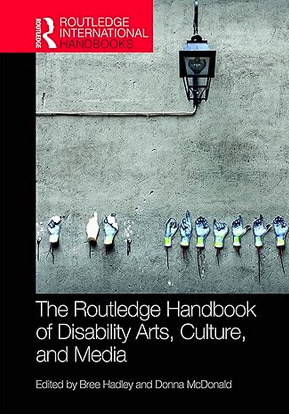
In the last 30 years, a distinctive intersection between disability studies – including disability rights advocacy, disability rights activism, and disability law – and disability arts, culture, and media studies has developed. The two fields have worked in tandem to offer critique of representations of disability in dominant cultural systems, institutions, discourses, and architecture, and develop provocative new representations of what it means to be disabled. This handbook brings disability arts, disability culture, and disability media studies – traditionally treated separately in publications in the field to date – together for the first time. It provides scholars, graduate students, upper level undergraduate students, and others interested in the disability rights agenda with a broad-based, practical and accessible introduction to key debates in the field of disability art, culture, and media studies. An internationally recognised selection of authors from around the world come together to articulate the theories, issues, interests, and practices that have come to define the field. Most critically, this book includes commentaries that forecast the pressing present and future concerns for the field as scholars, advocates, activists, and artists work to make a more inclusive society a reality.
Link to the Kindle version: https://amzn.to/49g0Wba
Link to the paper version: https://amzn.to/48aDF91
Link to WorldCat for university students/staff and libraries: https://search.worldcat.org/title/1076573621
